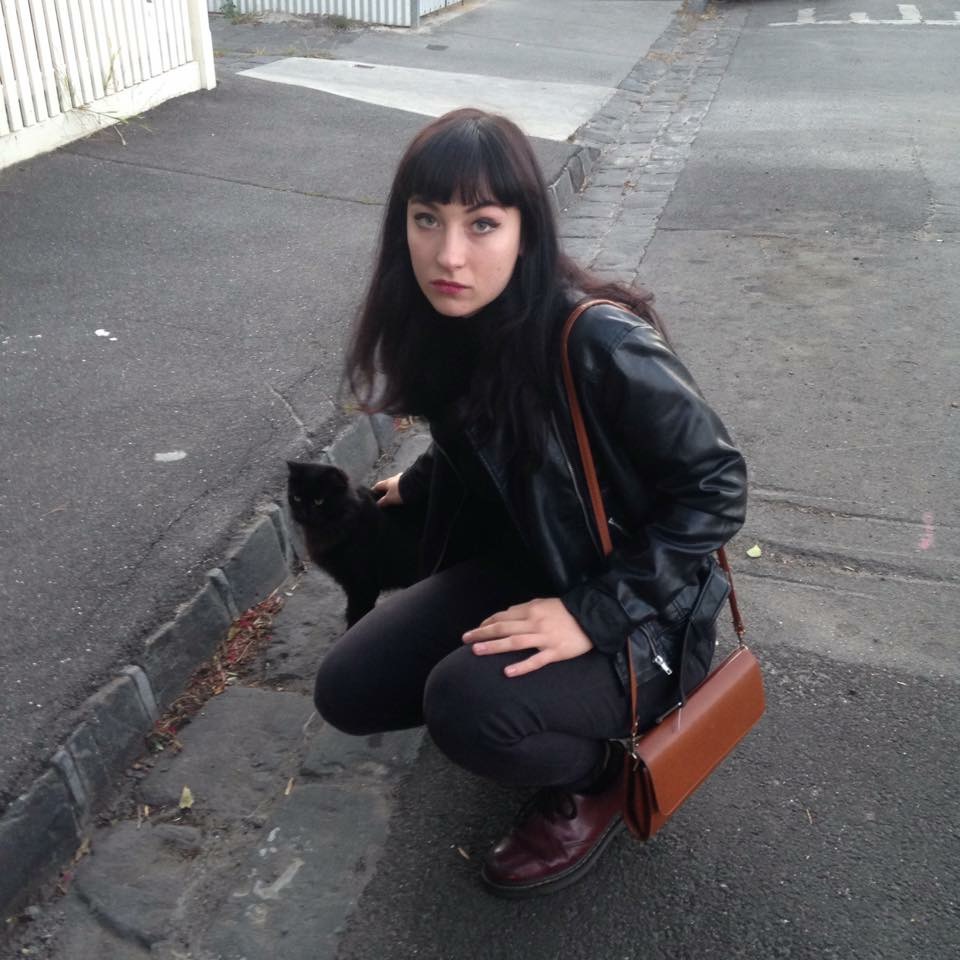FOCAL GRAB
So the first thing I thought of when looking at this footage was the focal grab I tried to attempt earlier on in the semester when filming the infamous ‘Lenny’ script. Now that I know how to mark the f.stops on the camera, it changes everything. At first I was aiming for Lenny to walk into focus and then out after a few seconds, but in the footage, Lenny walked into focus and then stayed in focus even at a pretty distant focal length. This is something I would like to reshoot again; a subject walking into a pulled focus, heading towards the camera, and then pulling them out of focus again. Above, I’ve added in my favourite dramatic sound effect straight from Gordon Ramsay’s Hell’s Kitchen to illustrate the untapped sinister side of Sammy who in class said if she had the chance she would steal a cop’s gun and wave it around “for the thrill”.
PANNING EXERCISE
I didn’t actually shoot any of this exercise as I was the model so it’s harder to analyse what happened and how things developed. Also considering that we decided to use this exercise time to have a production meeting for our project. When I edited this, I’ve tried to make a narrative to the random images of me dancing around building 12. Surely there is something I could cobble together with a string of nonsensical footage. If that’s not a spontaneous prompt driven narrative I don’t know what is, Paul.
INT. STANDING ROOM COFFEE. DAY On a busy afternoon, STANDING ROOM is abuzz with student's lining up for coffee drink. All are using their facial tanning devices into which they stare intently, hoping the UV rays will make them bli-nd. ROSIE is receiving a call which consists of only the screaming of loved ones, in the hopes it will send her deaf. Suddenly a TIME TRAVELLING DEMON appears, using her sensuality to lure ROSIE away from the coffee drink stand in the hopes of killing baby Hitler. As she is lead to alter the fabric of time, ROSIE uses the ancient art of KUNG FU to attack the demon. She wanders back to the stand, but something catches her eye, THE VOID ROSIE (to the void) What????? THE VOID recording... In a moment of realisation, ROSIE realises that existence is futile and astral projects into another plane of reality. Then she does a sick dab. END
I think the most integral part of learning to pan would be body position when turning the pan-handle. The pans in this sequence are moving too late after the action and are still clunky.
TEST SHOOT
The test shoot was really integral to work out the space and location. I realised the setting would have these huge beautiful windows which I would love to shoot from the outside, with the stage lighting, disco ball and suspended animation. I want to capture this with a slow zoom, followed by a reflection on the glass captured in a focal grab which I now know how to do.







